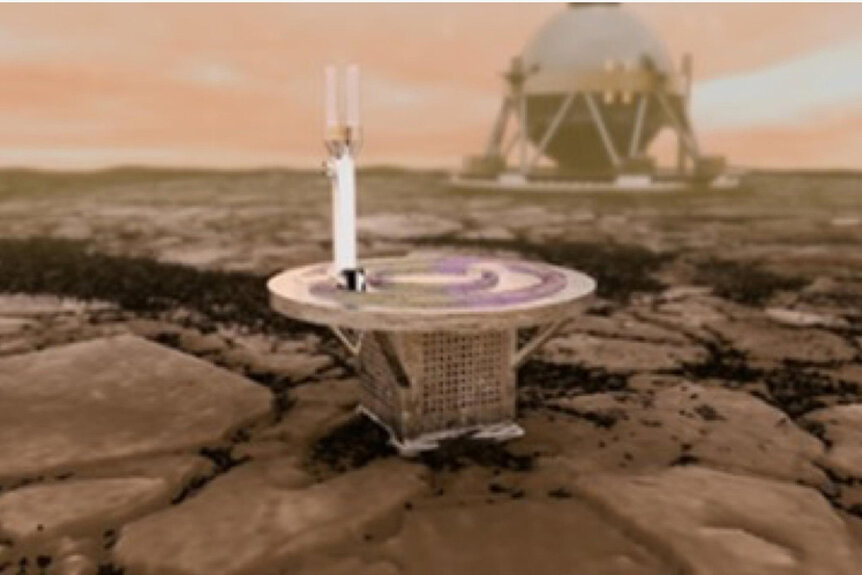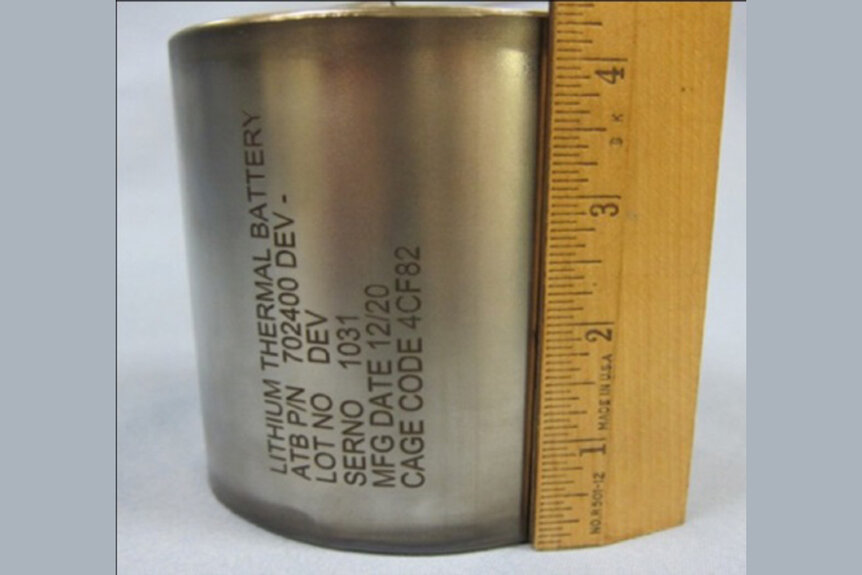Create a free profile to get unlimited access to exclusive videos, sweepstakes, and more!
A new battery technology could be the key to robots that can survive on hellish Venus
Exposing batteries to heat and pressure is exactly what they tell you NOT to do!

The Chronicles of Riddick (now streaming on Peacock!) follow the continuing adventures of Richard B. Riddick (Vin Diesel) in the aftermath of Pitch Black (also streaming now). Despite escaping from the ravenous alien creatures of the first film, Riddick still has a bounty on his head, and he travels to the planet Helion Prime in the hope of changing that. While there, he stumbles into a much larger problem: a force of planet-hopping religious fanatics, the Necromongers, who are determined to convert or kill all life in the universe. While attempting to escape, Riddick is captured and taken to a subterranean prison on the moon Crematoria. It was given that name for the same reason the prison is deep underground: its scorching temperature and violently volcanic surface.
There’s nothing quite like Crematoria in our own solar system (no shade to Io), but Venus is a pretty close approximation. You might think that Mercury is the hottest planet in the solar system, thanks to its close proximity to the Sun, but it only takes second place. On Mercury, temperatures on the day side of the planet can get up to 800 Fahrenheit (426 Celsius), while on the night side it gets as low as minus 290 Fahrenheit (minus 180 Celsius). On Venus, it’s even hotter than Mercury, and it’s hot everywhere all of the time. Temperatures climb to nearly 900 Fahrenheit (470) Celsius, thanks to Venus’ incredibly dense atmosphere.
RELATED: Why not? 'The Chronicles of Riddick' turns a simple story into 'Dune'
It's that combination of intense heat and crushing pressure which makes Venus a particularly difficult place to study up close. Most of our endeavors involving our sister planet center on orbiters which can peer at the planet from a much closer but still safe distance. Every lander we’ve ever sent has met a swift end at the hands of Venus’ violent surface conditions. To date, the record holder for longest-lived Venus lander goes to the Soviet Union’s 1981 probe, Venera 13.
The lander was sealed inside a pressure vessel which helped to protect it and its instruments for a little while. After landing, Venera 13 took measurements, photos, and sound recordings, including the first audio recordings of Venusian winds, over the course of the next two hours. After 127 minutes, its signal failed as it was presumably crushed beneath the overwhelming heat and pressure.
In order to really get a window into Earth’s evil twin, we need a lander capable of surviving there longer than a couple of hours. All of its parts, from its support structure to instruments, wheels, and everything else will need to be able to handle 900 degree temperatures and pressures more than 90 times that of Earth — that’s roughly akin to what you would experience a kilometer underwater — and they need to be able to do it for months or longer. Key among those components is the power system which will keep the craft running while it carries out its investigations.
A typical battery on the surface of Venus would pretty quickly reduce itself to a puddle of metal and electrolytes. Temperatures on Venus are more than hot enough to melt lead and boil a battery’s insides. To keep a lander powered up, we’re going to need a new kind of battery, capable of enduring conditions not of this world. To that end, NASA has partnered with Advanced Thermal Batteries (ATB) to develop battery technologies for future landing missions to Venus.
Their solution is a molten salt thermal battery capable of sustaining a discharge in Venus-like conditions for at least 60 days. Thermal batteries are good for this sort of application because they rely on a solid salt electrolyte. On Earth, they are inert at ambient temperatures and need an additional heat source, usually a pyrotechnic heat pellet in each cell, to heat the salt electrolyte. On Venus, we can cut out the pyrotechnic pellets and utilize the ambient heat of the planet itself to drive the reaction.
That was a good starting point, but the sorts of chemistries we usually use for thermal batteries have high self-discharge rates, causing them to run out of juice pretty quickly. Getting one that wouldn’t run out in a few hours meant playing with some atypical chemistries and materials.
They eventually settled on lithium alloy anodes, metal sulfide cathodes, and alkali halide molten salt electrodes which have so far tested above and beyond the 60 day target. While the actual batteries which will eventually power what has been dubbed the Long-Lived In situ Solar System Explorer (LLISSE) are still in development, ATB has succeeded at demonstrating a battery capable of operating for 118 days (almost twice the target) at Venus-like temperatures.
There’s still work to be done. Temperature is only one part of the problem and future work will focus on protecting the batteries from the shock of entry and impact, as well as designing a pressure vessel to shield the batteries from the pummeling of Venus’ atmosphere. NASA and ATB anticipate a final prototype battery system for LLISSE within the next 18 months.
While you’re waiting for the live web stream from Venus, round out your Riddick marathon with the appropriately named Riddick, streaming now on Peacock!




























